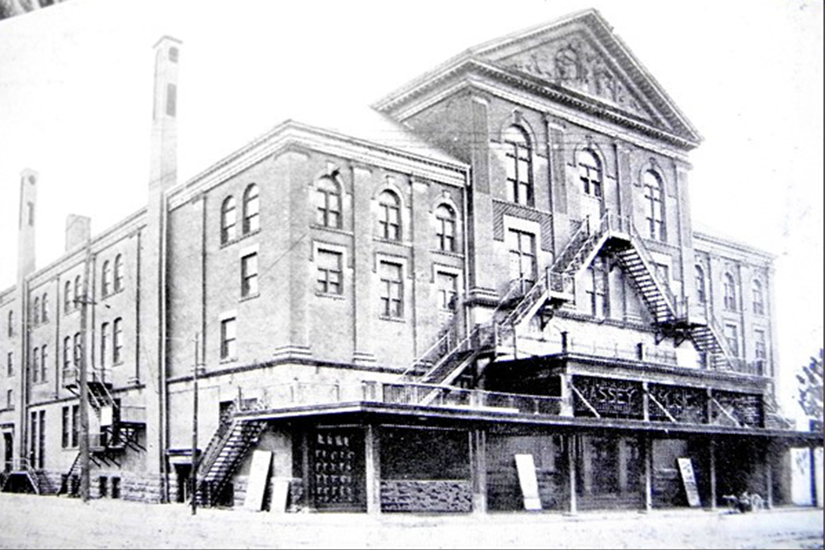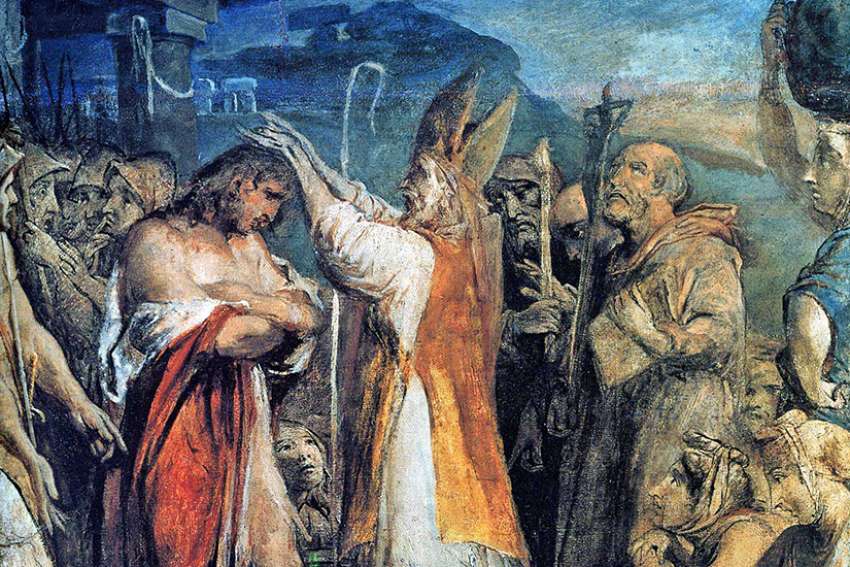The annual feast of Erin’s patron saint was celebrated in Toronto with even more than the usual fervour, the number of gatherings in its honour being unusually large and the enthusiasm proportionate.
The day was fittingly begun with High Mass, at which large congregations were present, and the shamrock and the strains of St. Patrick’s Day were everywhere in evidence.
In the evening the music and song of Ireland together with the narration of its past history and present prospects were listened to in many halls, the consensus of opinion being that brighter days for Ireland are near, and that the celebration in Toronto was of a character in every way becoming to our quickly growing and expansive city.
The annual concert at Massey Hall on St. Patrick’s night, under the direction of the Ancient Order of Hibernians, proved in every way a magnificent success, all the elements which go to the making up of the term “magnificent” being present. A great and crowded house, decorations suggestive of the day and all that it recalls, a fine musical program and an able, interesting and cultured speaker, were all present.
Facing the audience were the words, “God Save Ireland,” and fronting those on the platform was an immense scroll containing the words of Irish welcome, “Cead Mile Failte,” while the shamrock, palms and green and white drapings, together with the flags of Erin, decorated the house. But a more attractive feature than even these were the 400 or more boys and girls from Toronto homes who rose tier upon tier above the stage, and who during the evening sang intelligently and well the patriotic songs of Ireland.
The name of Hon. James M. Sullivan, a U.S. diplomat, had been a special attraction in drawing not only those interested in the day, but many others to Massey Hall, and the address to which they listened, though not as long as many would have desired, had all the charm which are given by a full, rich voice, a fine presence, a comprehensive grasp of the subject and a sincere earnestness in its presentation.

Massey Hall in 1912, after a portico and fire escape had been added to its north facade on Shuter St. (Couresy of Historic Toronto)
A beautiful word picture of Ireland made up the introductory remarks of Mr. Sullivan, followed by a description of the Irish people, whose characteristics both good and bad mark them out as a distinct people. “We are known as the fighting race, but I say that the element which is strongest in the Irish nature, and I do not confine myself to any denomination, for Irishmen, no matter what their religion may be — I say the strongest element in the Irish character is the religious element.”
The duty at present facing the Irish in America, that of forcing the world to recognize the qualities of their race, was earnestly pointed out, and the truth was forcibly noted that “never before were the Irish people so potential as at the present time.”
As is now becoming customary when a lengthy program is presented, the vote of thanks was dispensed with, the banquet held later being taken advantage of to give expression to appreciation of the lecture.
In the musical program, Miss Angelo Tone Breen presided at the piano. Every contributor did well. The children sang intelligently and musically. Mr. H. Ruthann McDonald gave his songs in his own large and sympathetic manner. “Kathleen Mavourneen,” as sung by Miss Theresa Cronin, won her a warm reception from the audience; Mr. Frank Horan gave an acceptable rendition of “Bells of Shandon” and Mr. Eddie McGrath in a soft and pleasing voice sang “Erin, I Am Leaving Thee” in such a way as to demand an encore.
Miss Nellie Byrne, who has a beautiful soprano voice of fine range and carrying power, and was accompanied on the violin by Mr. A. Friend, was charming in her selections. Master Glynn surprised his hearers by his musical development since last year, his voice now being well under control and its volume such as to be heard, and heard pleasantly, in every corner of the large hall.
The selections of Mr. Bert Harvey delighted his audience and fairly convulsed the members of the Juvenile Chorus, and he had to respond to repeated recalls.
The singing of “God Save Ireland” brought the successful evening to a close.
"God Save Ireland" by John McCormack, 1906


